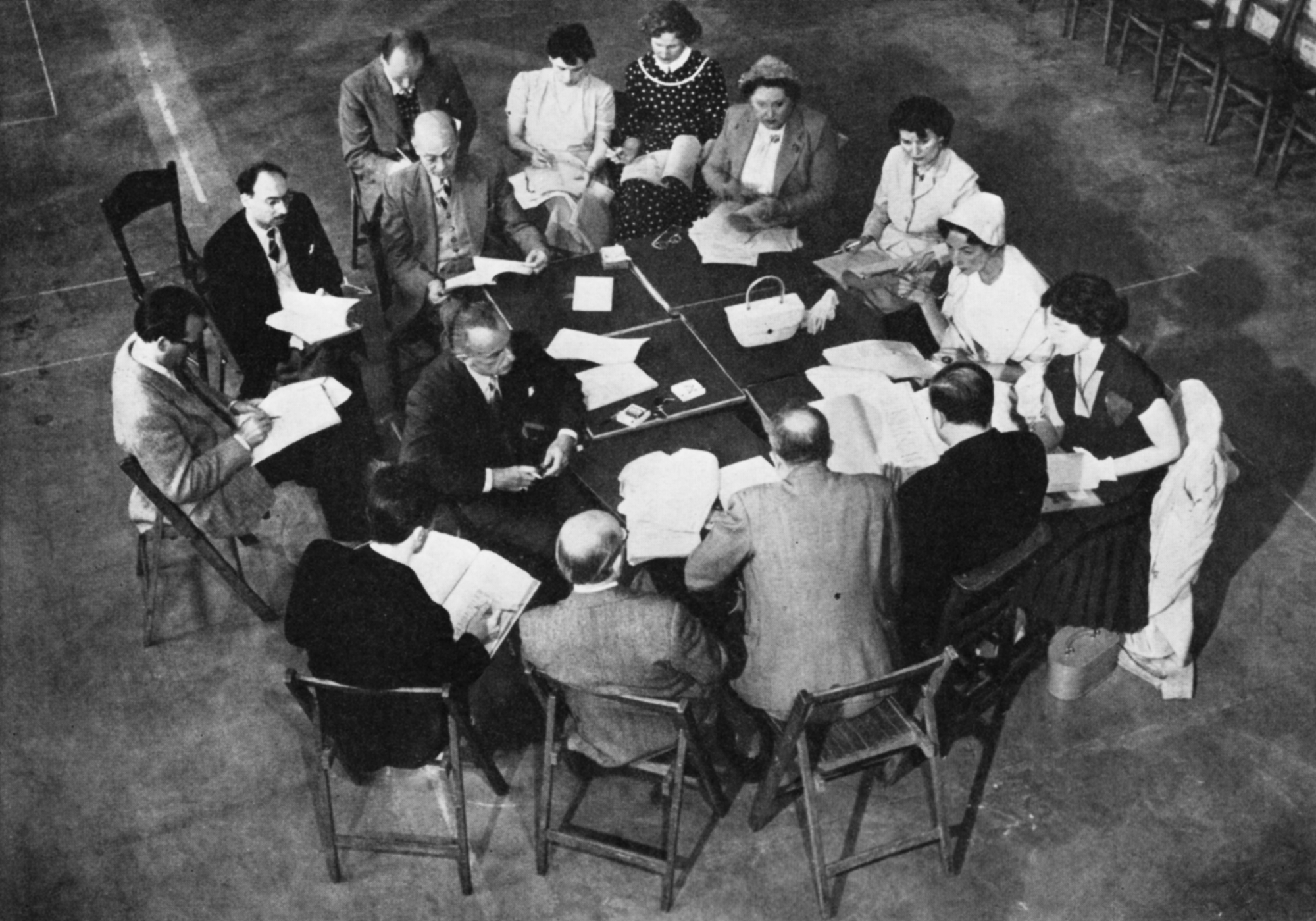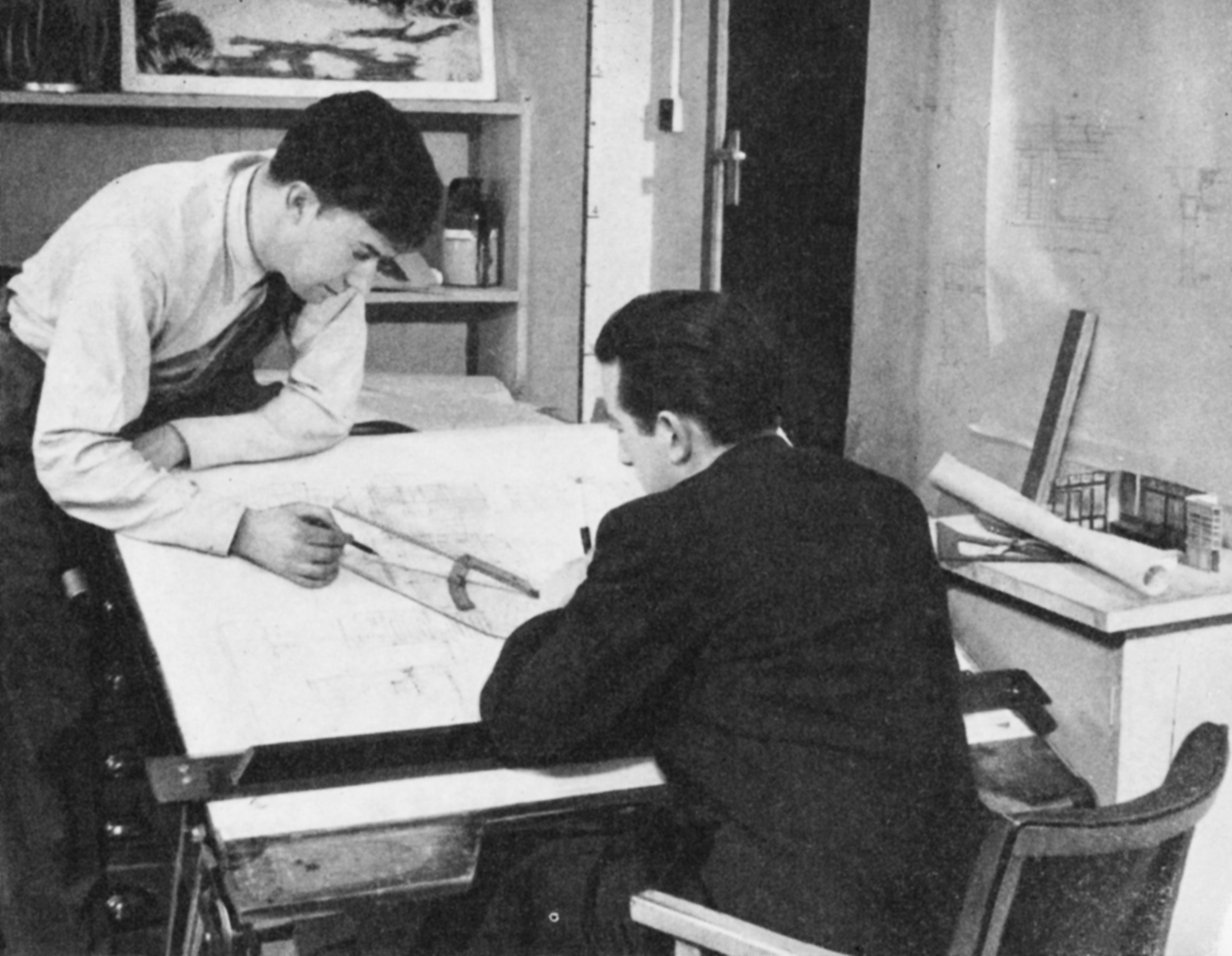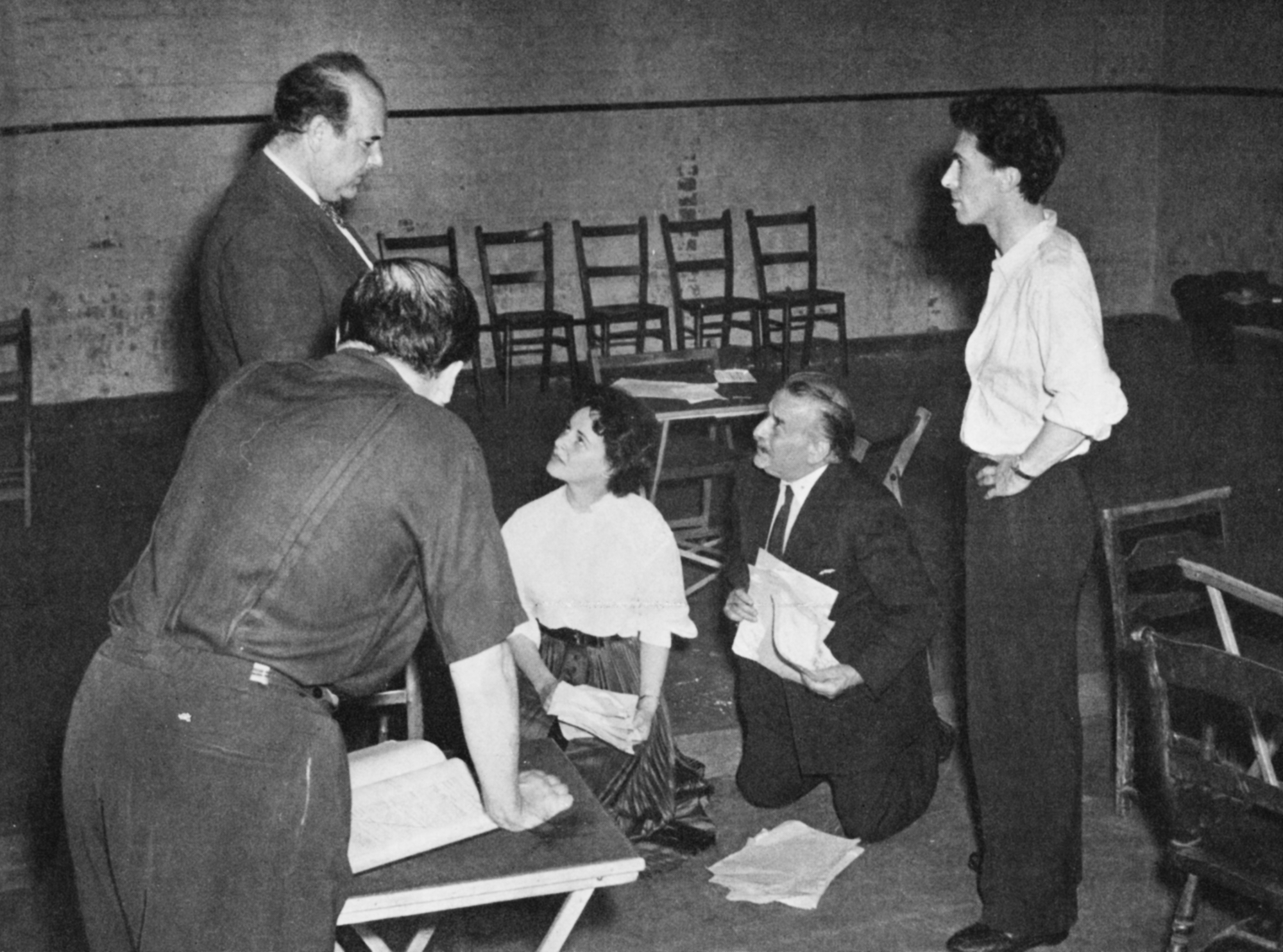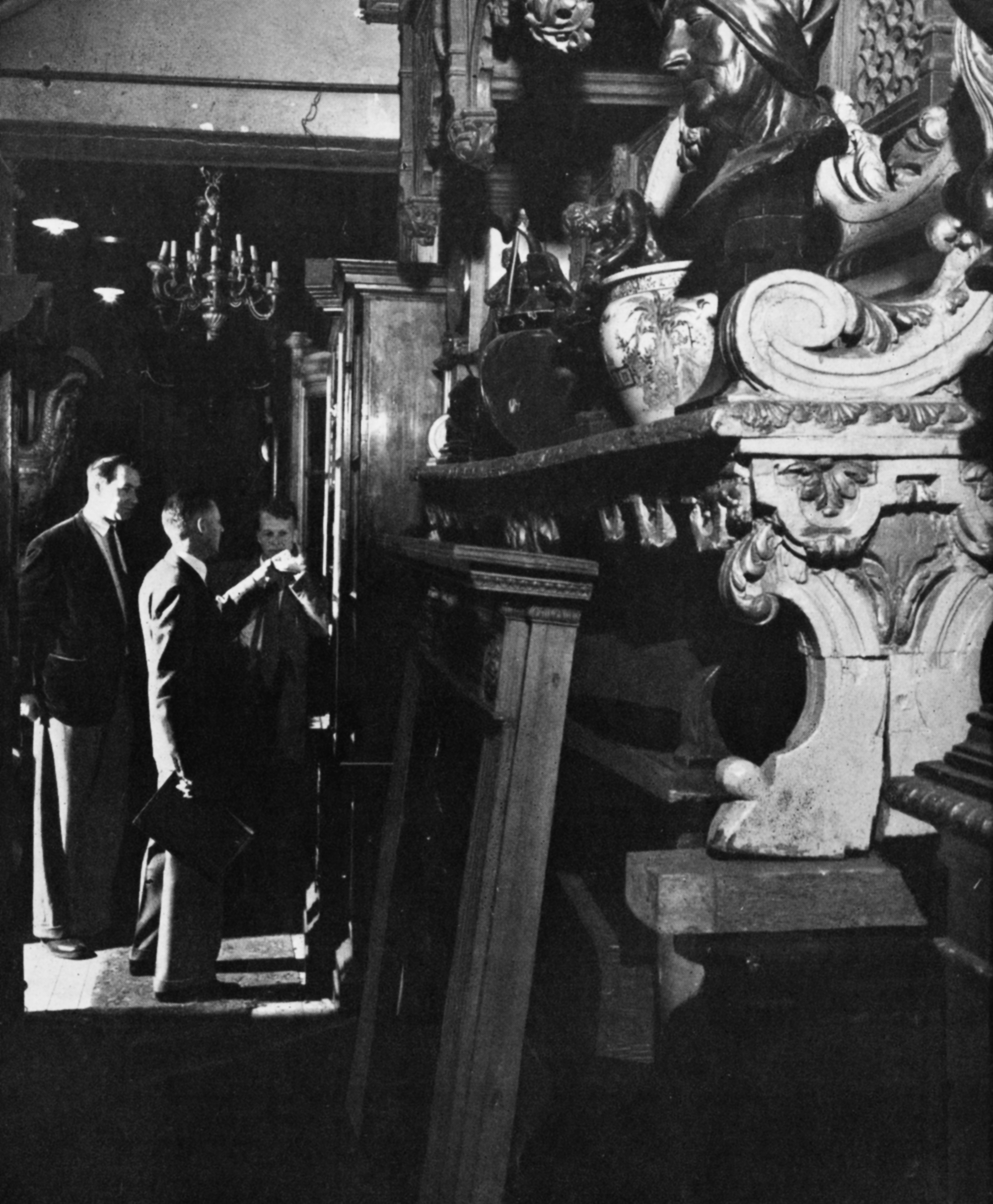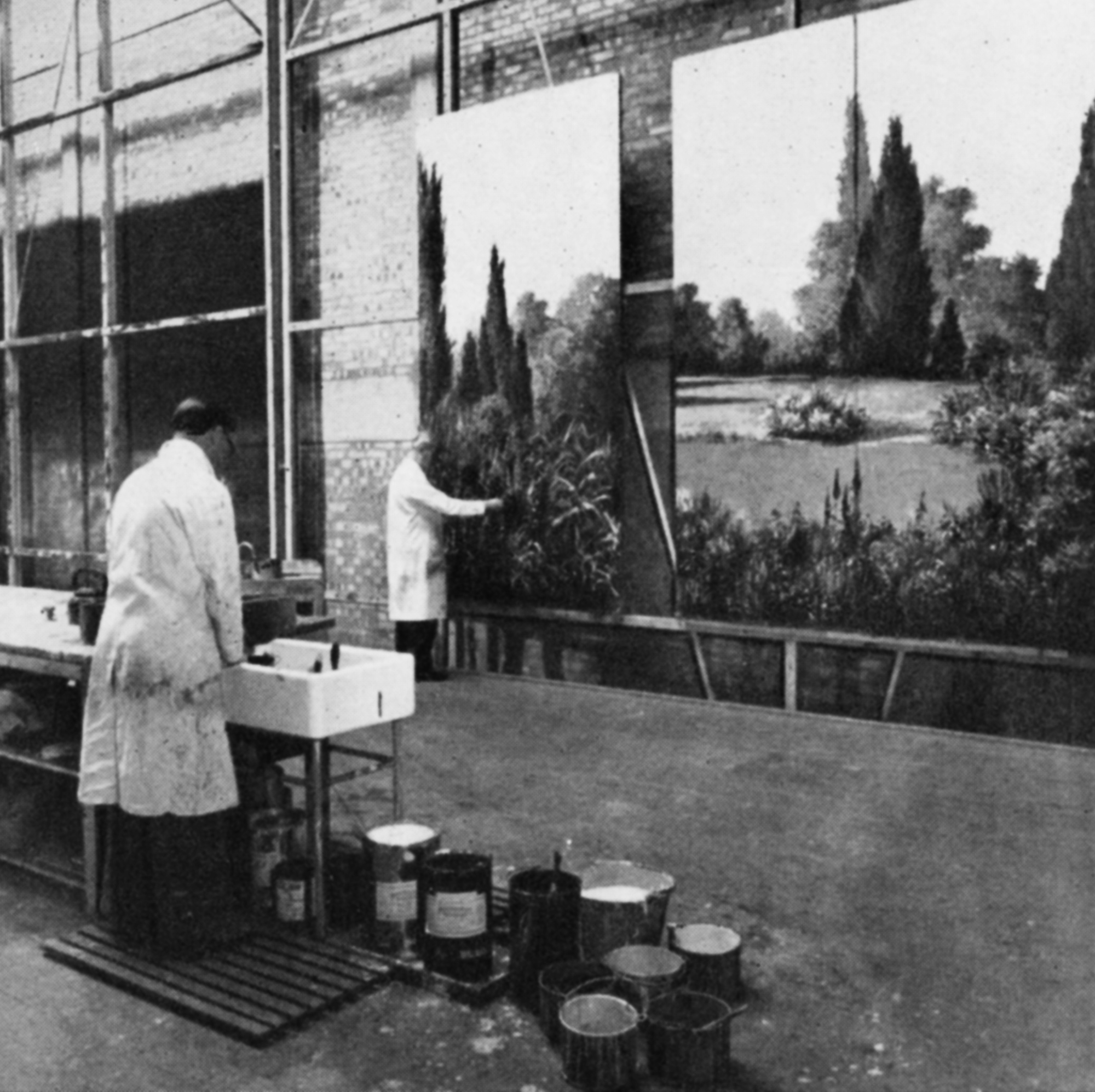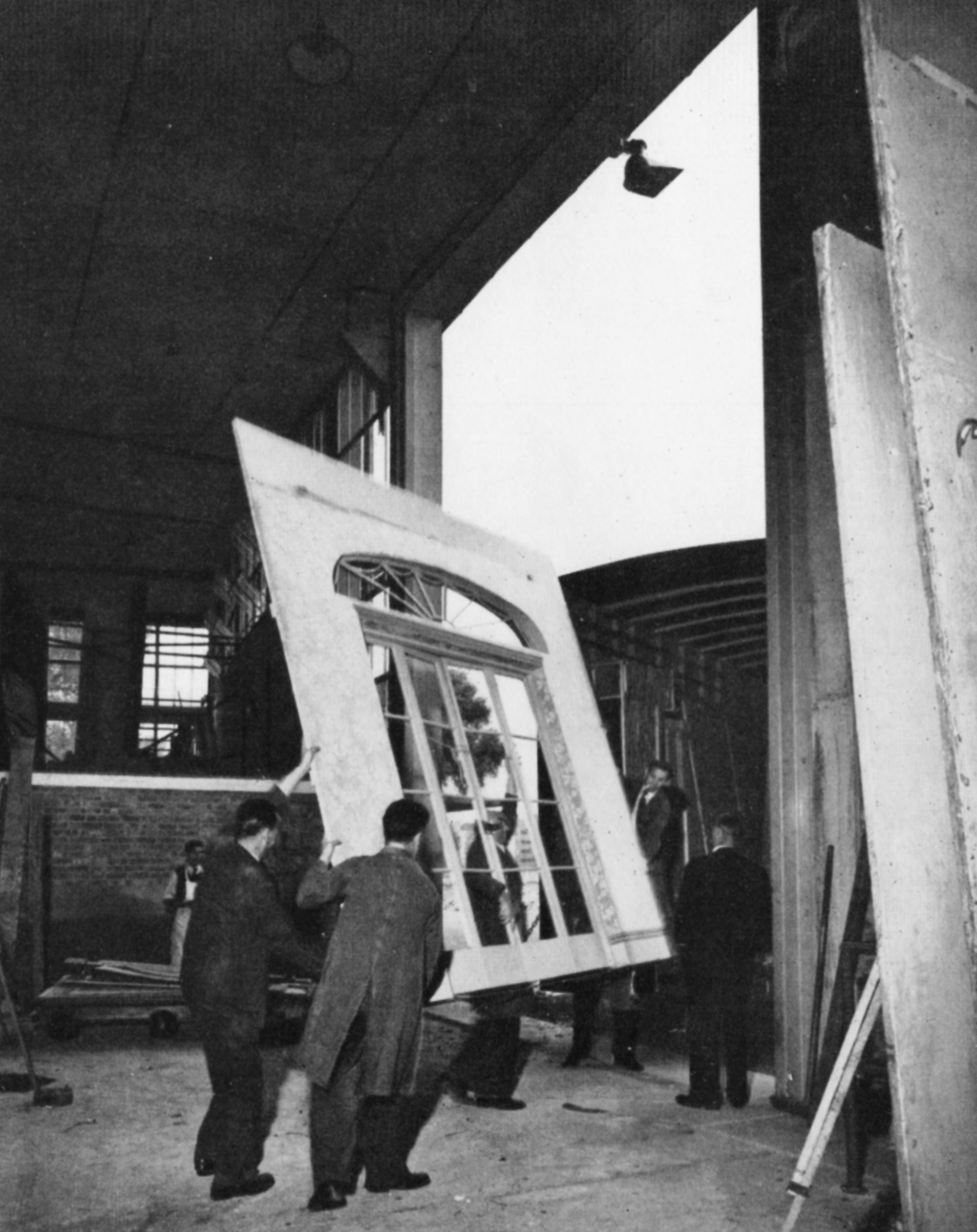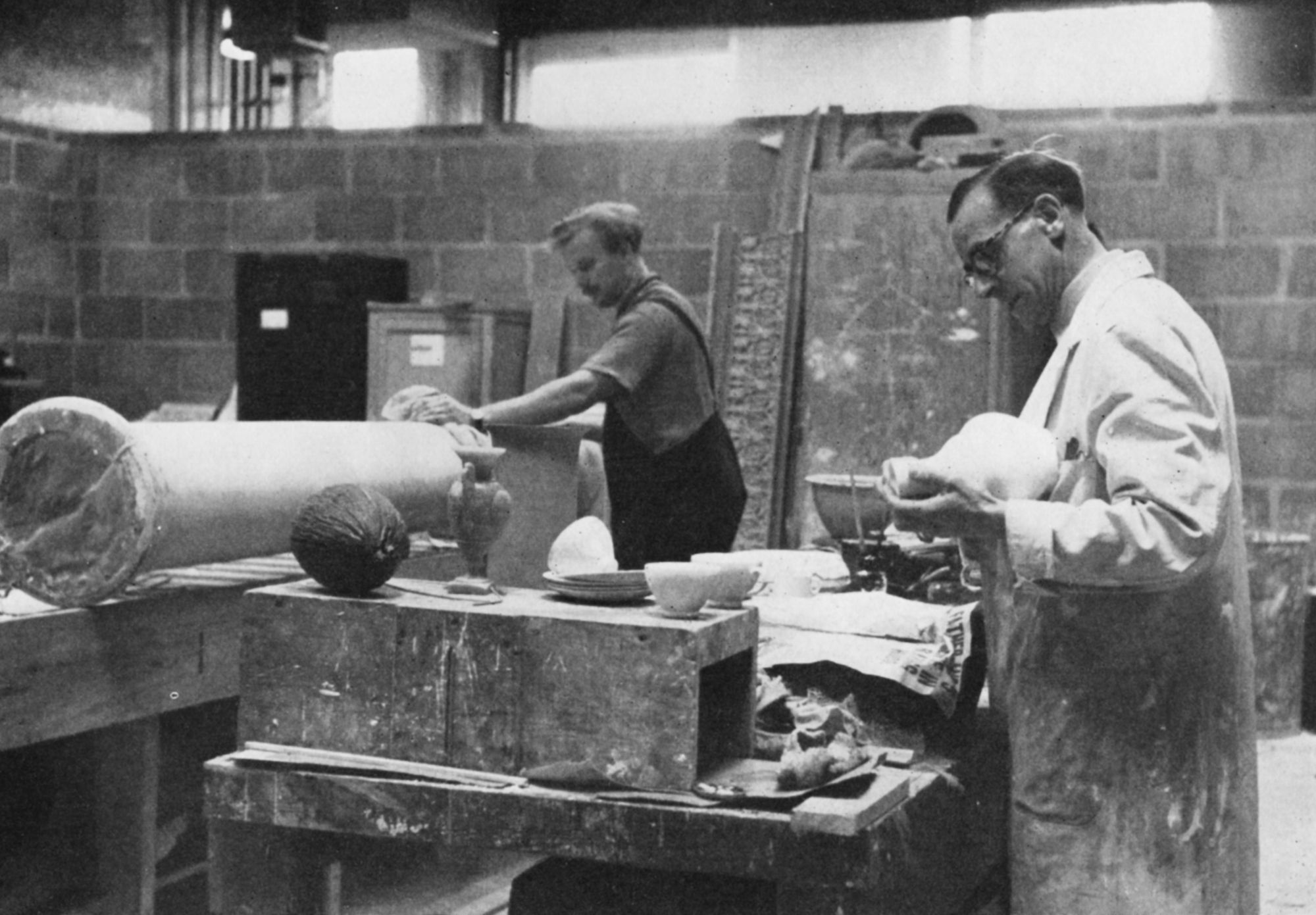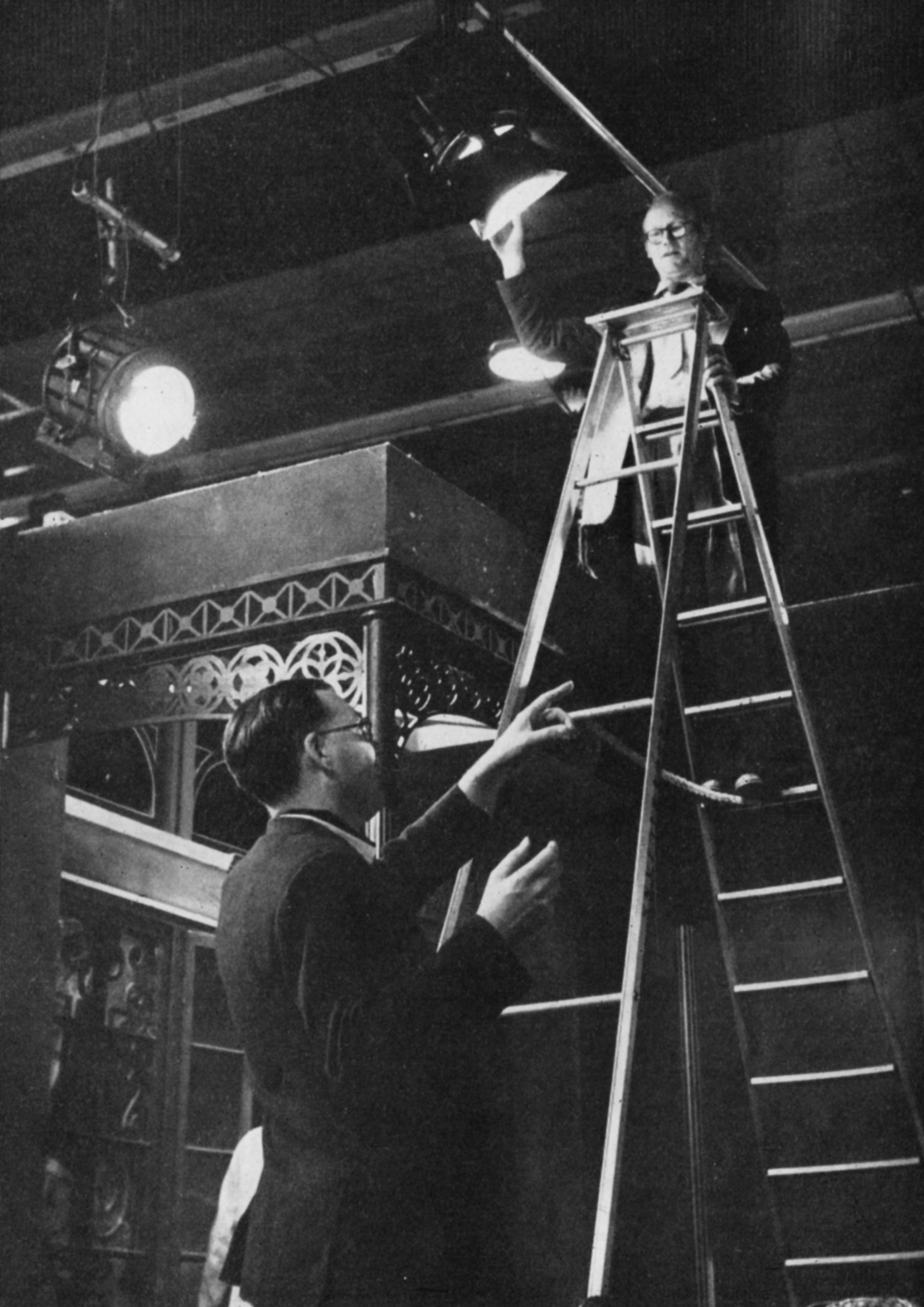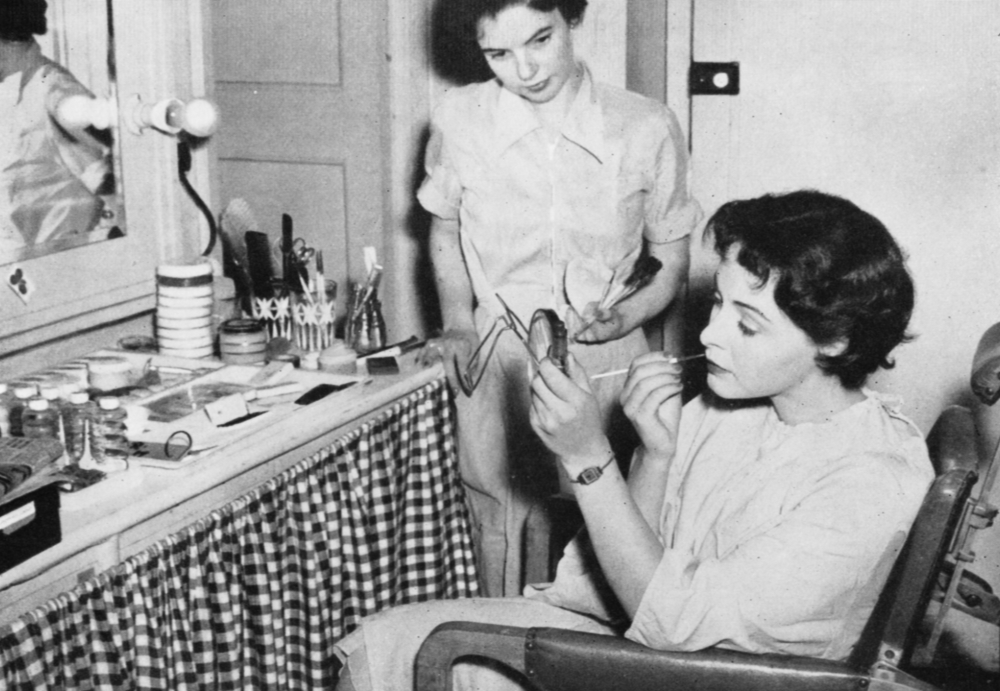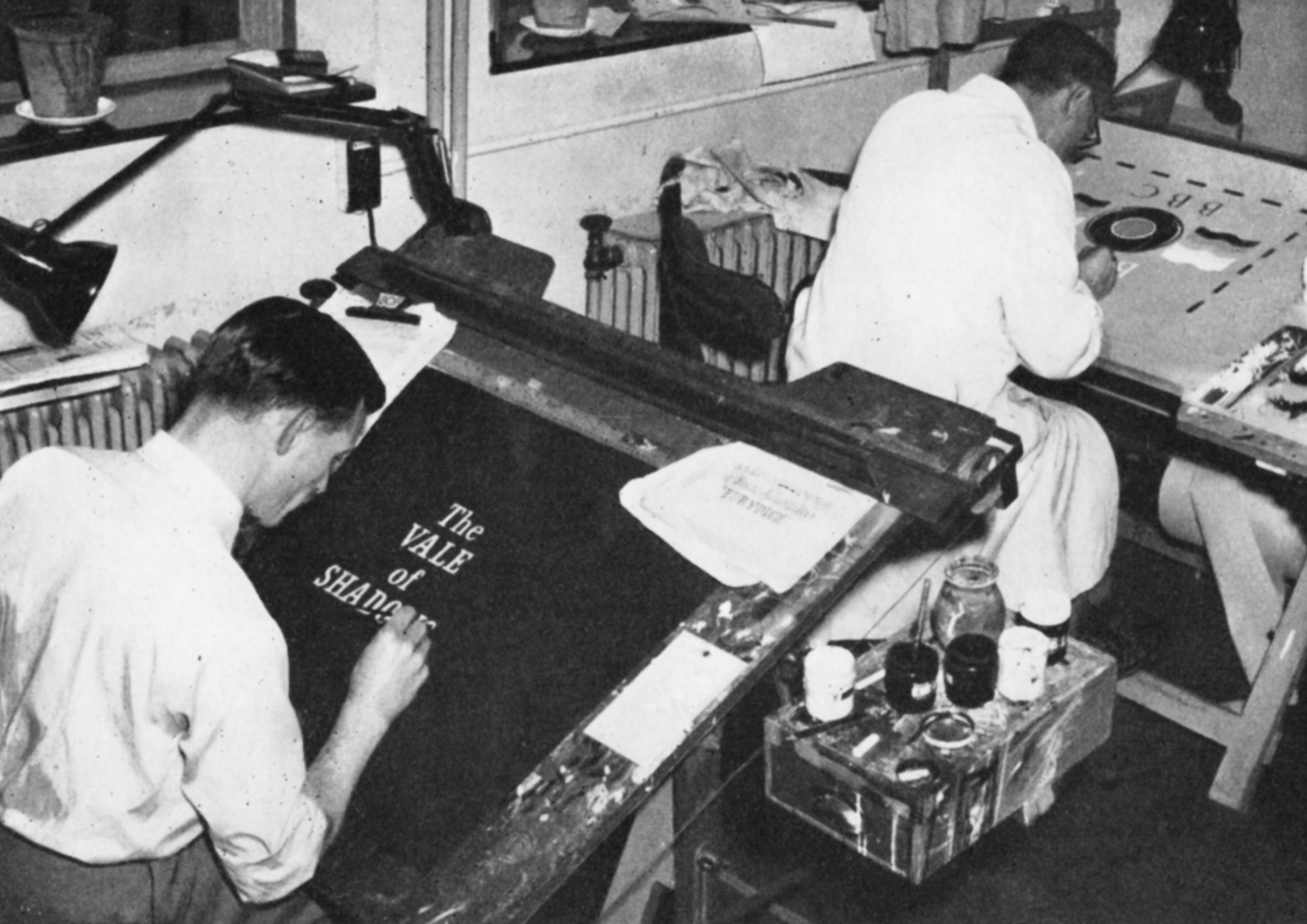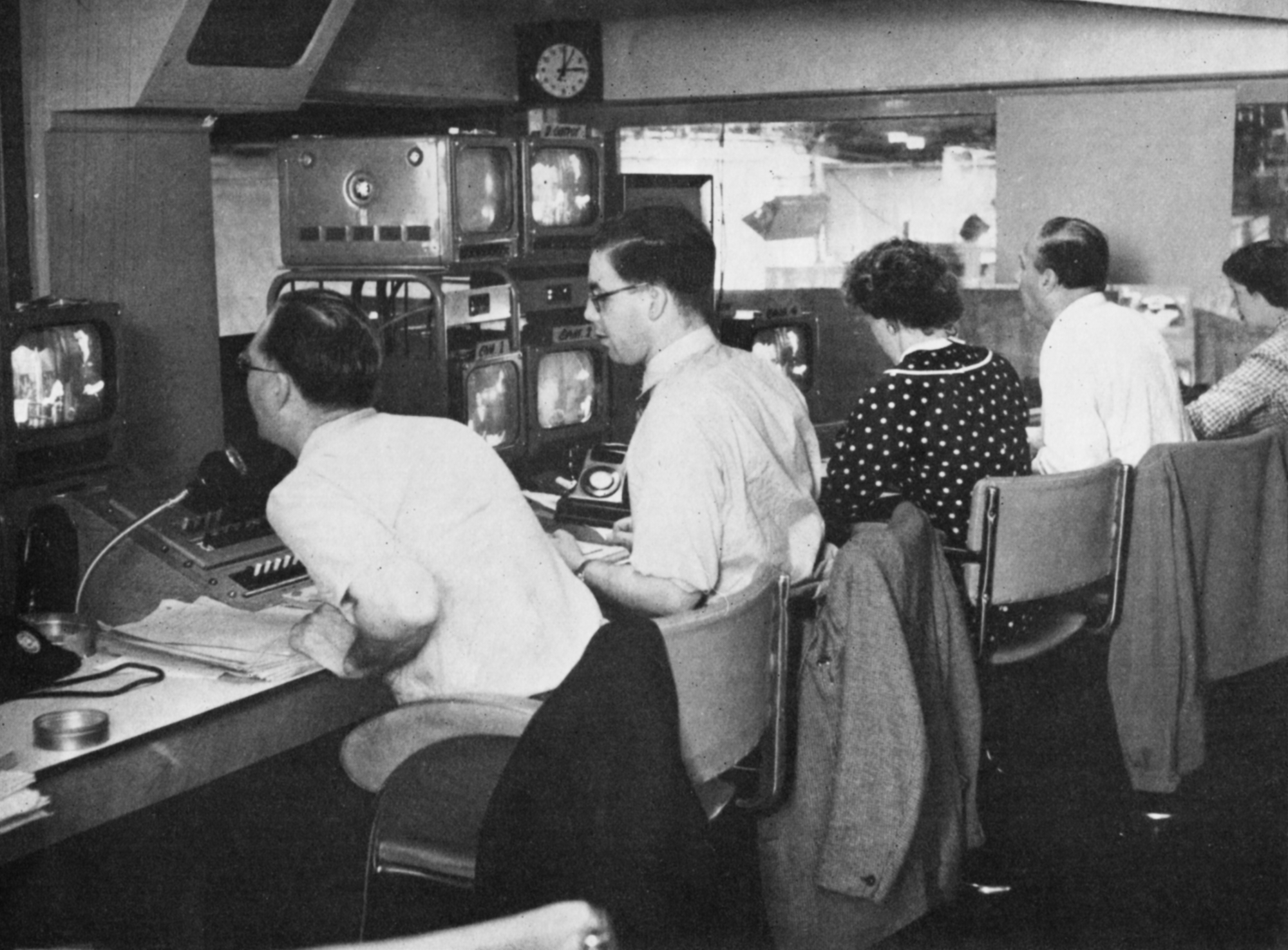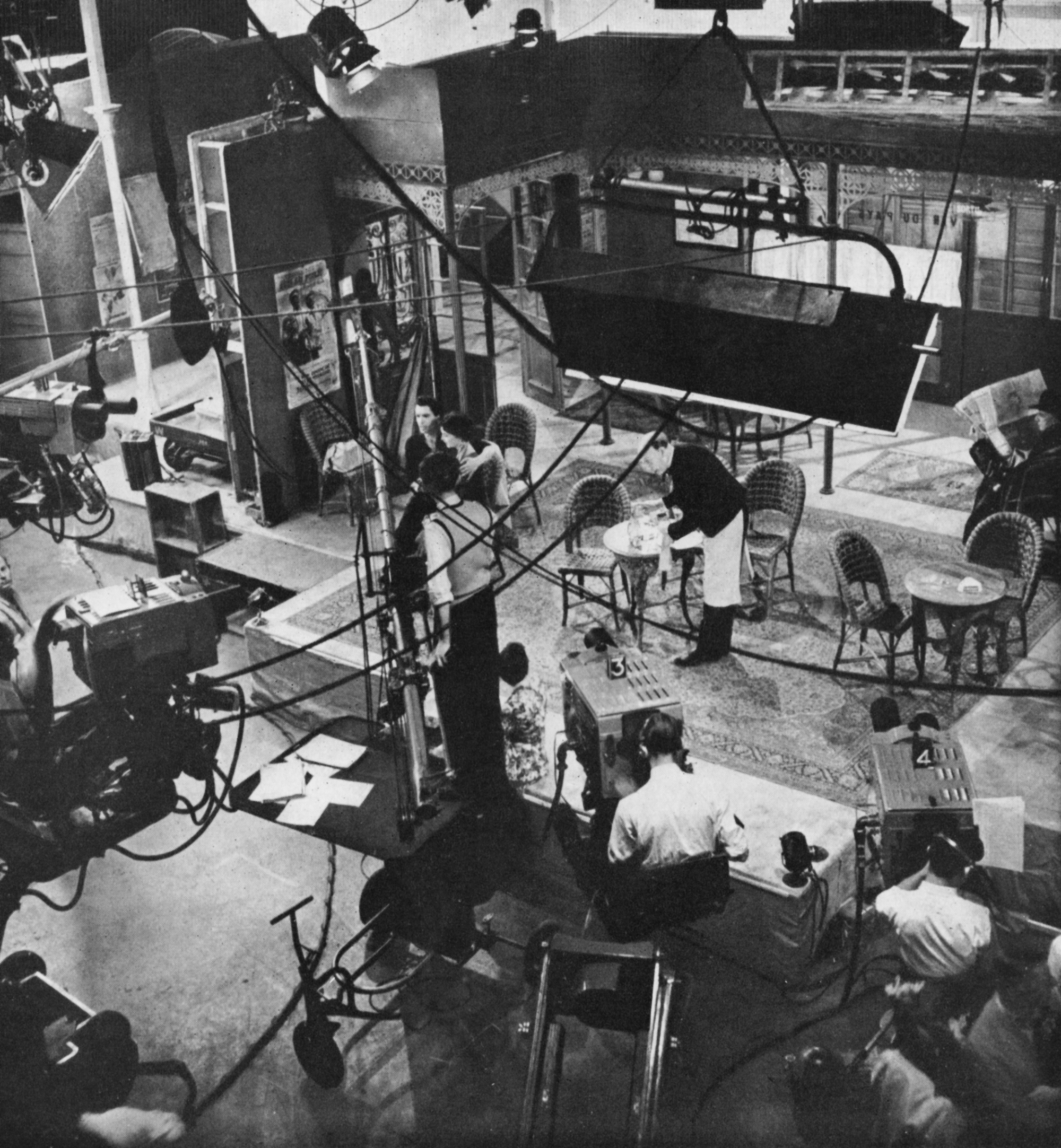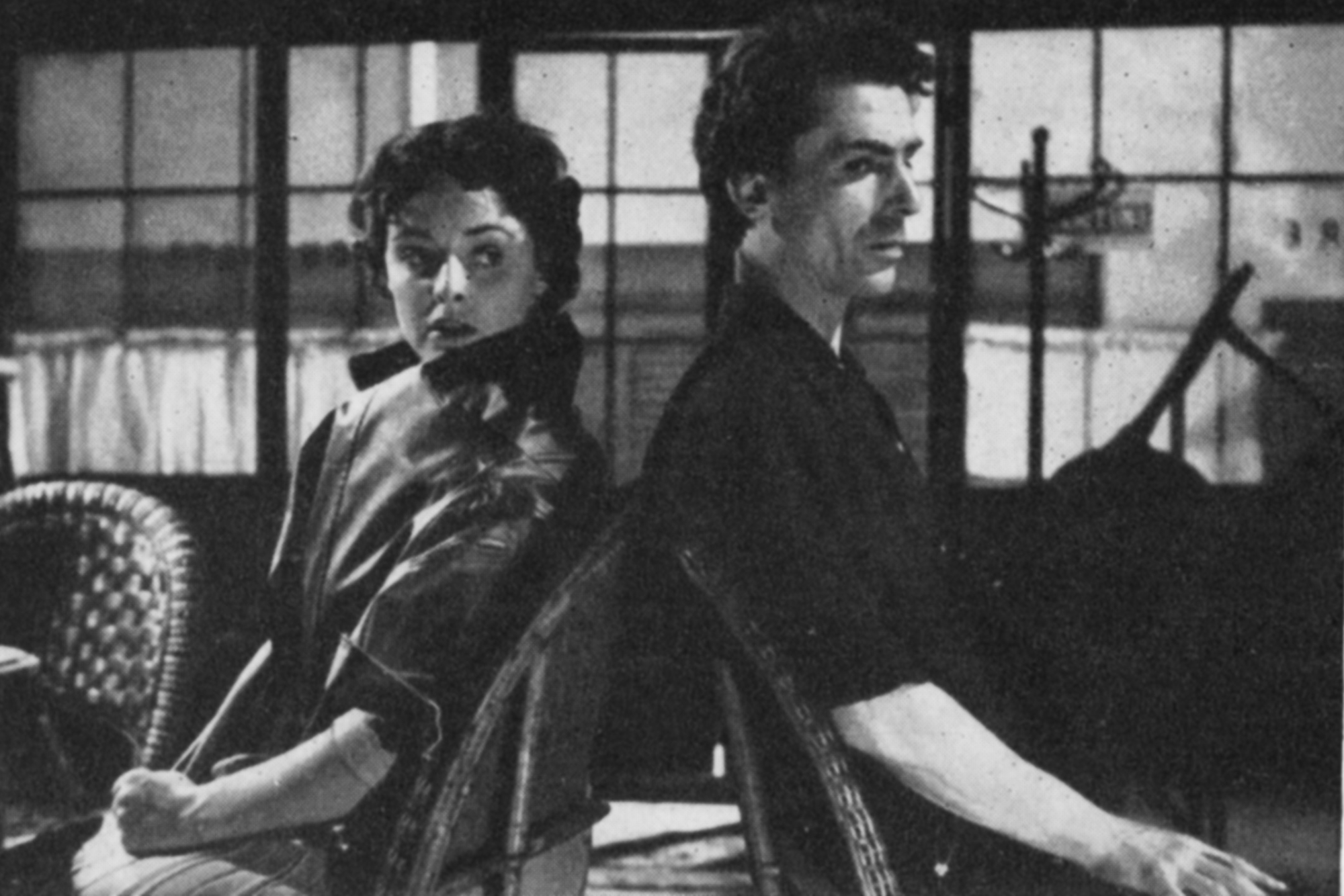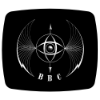How it is done
Some BBC Television dates
Inauguration of experimental television transmission of still pictures by the Fultograph process from Daventry
30 August 1928
First experimental television programme from Broadcasting House, 30-line system (Baird process taken over by BBC)
22 August 1932
High-definition Television Service from Alexandra Palace officially inaugurated
2 November 1936
Coronation of King George VI: first outside broadcast by Television Service
12 May 1937
Television Service closed down for reasons of national defence
1 September 1939
Television Service resumed
7 June 1946
First television outside broadcast from No. 10 Downing Street: Commonwealth Conference
11 October 1948
Sutton Coldfield television transmitting station opened
17 December 1949
First television outside broadcast from the Continent (Calais)
27 August 1950
First ‘live’ air to ground television broadcast (from an aircraft in flight)
30 September 1950
Holme Moss television transmitting station opened
12 October 1951
First television election address – given by Lord Samuel for the Liberal Party
15 October 1951
Kirk o’ Shotts television transmitting station opened
14 March 1952
First direct television from Paris (experimental)
21 April 1952
First schools television programme (4 weeks experiment)
5 May 1952
First public transmission in the UK of television from Paris
8 July 1952
Wenvoe television transmitting station opened
15 August 1952
Pontop Pike and Glancairn temporary television transmitting stations opened
1 May 1953
Truleigh Hill temporary television transmitting station opened
9 May 1953
Coronation ceremony televised for the first time
2 June 1953
Television relayed from ship at sea for the first time during the Royal Naval Review
15 June 1953
Temporary television transmitting station near Douglas (Isle of Man) opened
20 December 1953
First European exchange of television programmes with eight countries taking part (to 4 July)
6 June 1954
Rowridge temporary television transmitting station opened
12 November 1954
Redmoss temporary television transmitting station opened
14 December 1954
North Hessary Tor temporary television transmitting station opened
17 December 1954
Norwich television transmitting station opened
1 February 1955
Divis television transmitting station opened (replacing Glencairn in Northern Ireland)
21 July 1955
First section of permanent two-way television link with Continent completed
15 September 1955
Les Platons (Channel Islands) television transmitting station opened
3 October 1955
Colour television test transmissions began from Alexandra Palace
10 October 1955
Meldrum television transmitting station opened (replacing Redmoss, near Aberdeen)
12 October 1955
Demonstration of colour television to members of the press
20 October 1955
Pontop Pike television transmitting station completed
15 November 1955
First live television programme from Northern Ireland
17 November 1955
Crystal Palace television transmitting station opened replacing Alexandra Palace
28 March 1956
First public colour television test transmissions from Alexandra Palace
3 April 1956
First Ministerial television broadcast (Prime Minister)
27 April 1956
North Hessary Tor television transmitting station completed
22 May 1956
Rowridge television transmitting station completed
11 June 1956
First ‘live’ television broadcast from a submarine at sea
16 June 1956
First television transmission from a helicopter
4 August 1956
Source: BBC Handbook for 1961


